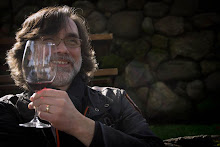Two lava lamps rehearse their unhurried ballet on either end of the big console’s monitor shelf. Studio A is dark beyond the heavy, slanted glass wall that separates it from the control room. I can just make out the shadowed contours of the grand piano. Chrome hardware and brass cymbals glint faintly from the drum booth at the far end of the room.
It’s noiseless out there tonight because this is a mixing session. Basic tracks were recorded a month ago, and overdubbing finished up last week. Now the separate pieces – drums, vocals, guitars, more guitars, piano, strings, finger snaps – wait on parallel strips of two-inch 24-track tape for the engineer and I to shape them into four minutes of integrated beauty.
Each track will want some degree of doctoring, ranging from merely adjusting its relative level, to patching it through a pitch-fixing box. One track might trigger a digital sample of a different sound altogether. Mixing is an intuitive interplay of science and art.
Just as we’re about to get going, the engineer pushes his chair back from the mixing board and shakes his head. He mutters something about interns. The patch bay hasn’t been cleared, and the knobs and faders haven’t been returned to unity. This was the intern’s job following the previous session.
“Zeroing the board” is standard protocol in good recording studios. It’s achingly tedious to undo someone else’s settings, and it’s a momentum killer. An engineer assumes each session will begin with a clean slate.
This offers an analogy pertinent to spiritual health. It’s possible for the fragmented bits of a soul to be shaped into a life of integrated beauty. Periodically zeroing one’s interior is what’s called for. That’s when the Engineer loves to get to work.
Subscribe to:
Post Comments (Atom)

No comments:
Post a Comment